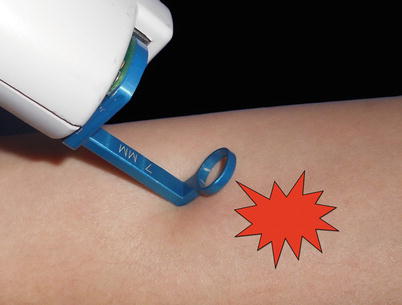Fig. 17.1
The maximum dose of topical anesthetic (EMLA®) is 60 g on 400 cm2 of normal skin
Accidents Happen When
Dry surgical drapes, towels, sponges, or paper materials are used in the treatment field. CO2 laser and several visible lasers can ignite these materials resulting in burns to the patient.
Solution
Always ensure that the surgical drapes, towels or sponges in the vicinity of the laser-treated site are soaked with normal saline or sterile water.
Preparing the Laser
Accidents Happen When
The laser key is left unattended in the console of the laser machine. It can be used by unauthorized or inexperienced persons, and adverse events may occur as a result (Fig. 17.2).
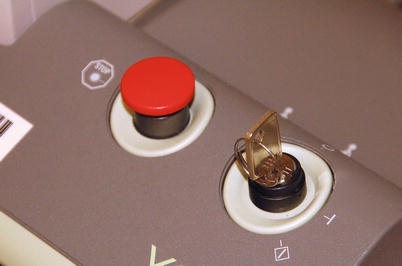
Fig. 17.2
The laser key should not be left in the console of the laser machine if it is not in use
Solution
Keep the laser key in a secured area and signed out only by authorized persons (Fig. 17.3).

Fig. 17.3
Cabinet near laser for secure key storage
Accidents Happen When
An attempt to open the laser console’s protective covers is made. Opening the covers will expose personnel to high voltage components, the laser resonator, and possible laser radiation.
Solution
Only allow manufacturer-certified service technicians to open and work inside the console (Fig. 17.4).
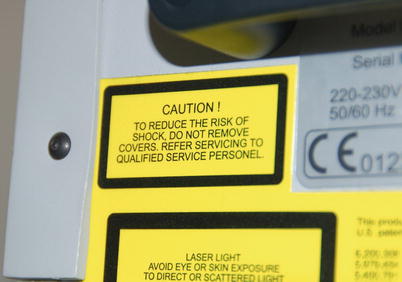
Fig. 17.4
The laser console’s protective cover should not be opened
Accidents Happen When
An extension cord or power strip is used for laser equipment (Fig. 17.5). The high voltage of the laser can exceed the safety threshold of the cord and result in a fire.
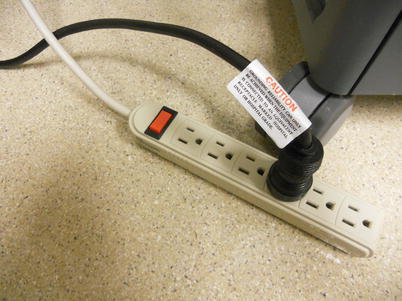
Fig. 17.5
A power strip should not be used on laser equipment

Fig. 17.6
Electrical outlets appropriate for lasers. (a) Laser plug, marked “hospital grade”. (b) The laser plug should only be used in an appropriate outlet
Accidents Happen When
The area around the laser and foot switch is wet (Fig. 17.7). Electrocution and laser malfunction may occur.
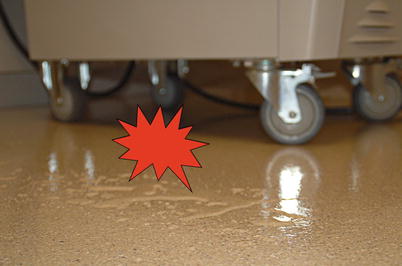
Fig. 17.7
Examine floor near laser and foot switch. Wetness in the area around the laser and foot switch increases risk of electrical shock
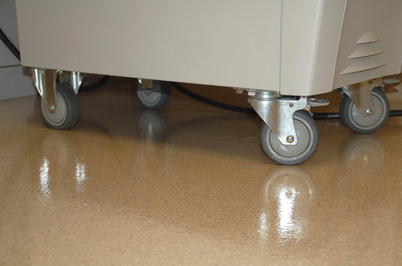
Fig. 17.8
Keep the area around the laser dry
Operating the Laser
Accidents Happen When
The target area is difficult to visualize or access by the operator.
Solution 1
Position the patient on a surgical table to permit comfortable access to the target surface.
Solution 2
A lamp with magnifying lens may be used to improve visibility of the treatment site (Fig. 17.9).
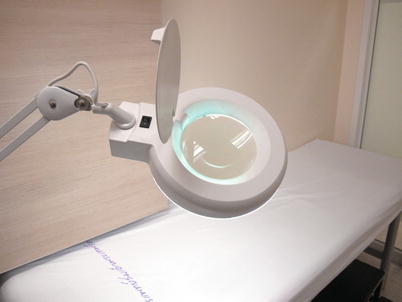
Fig. 17.9
A lamp with magnifying lens may be used to improve visibility of the treatment sites
Accidents Happen When
The laser fiber is kept on the floor. It may be broken by stepping on it or rolling the laser wheels over it (Fig. 17.10).
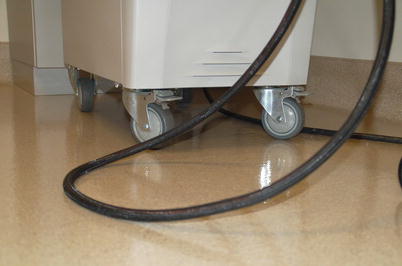
Fig. 17.10
Laser fiber at risk on floor
Solution
Keep the laser fiber off the floor and in a visible location to ensure its integrity (Fig. 17.11).
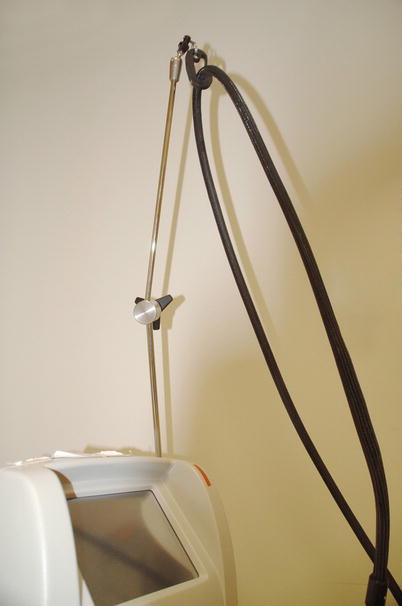
Fig. 17.11
The laser fiber is stabilized off the floor by the metal rod
Accidents Happen When
The standby mode of the laser is disengaged prematurely prior to use. This potentiates unintentional firing of the laser.
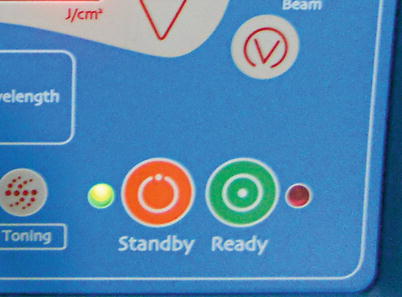
Fig. 17.12
The laser should put into the standby mode whenever the laser is not in use
Accidents Happen When
The foot switch is pressed by someone other than the operator holding the hand piece.
Solution
Only the person directing the aim of laser beam should have access to the laser foot switch.
Accidents Happen When
The laser machine is moved while the operator is using the laser beam (Fig. 17.13).
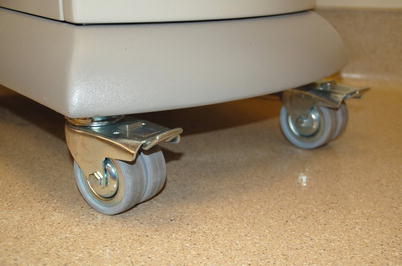
Fig. 17.13
The wheels are unlocked. The laser machine may be moved while it is in use
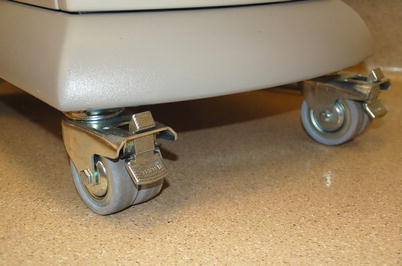
Fig. 17.14
The wheels should be locked whenever the operator is using the laser
Accidents Happen When
Excessive charred tissue debris accumulates on the carbon dioxide (CO2) laser-treated field. Carbon particles superheat and burn the patient (Fig. 17.15).
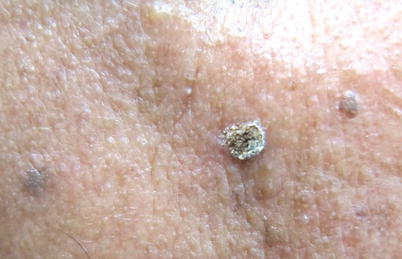
Fig. 17.15
Carbonized tissue after CO2 lasing
Solution
Limit the buildup of carbonized tissue and remove the charred tissue with saline-soaked gauze (Fig. 17.16).
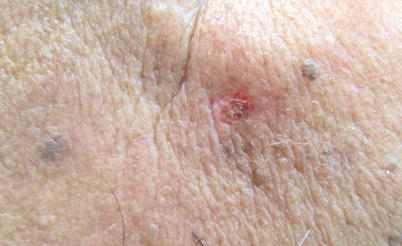
Fig. 17.16
Irrigated and cleaned carbonized tissue
Accidents Happen When

